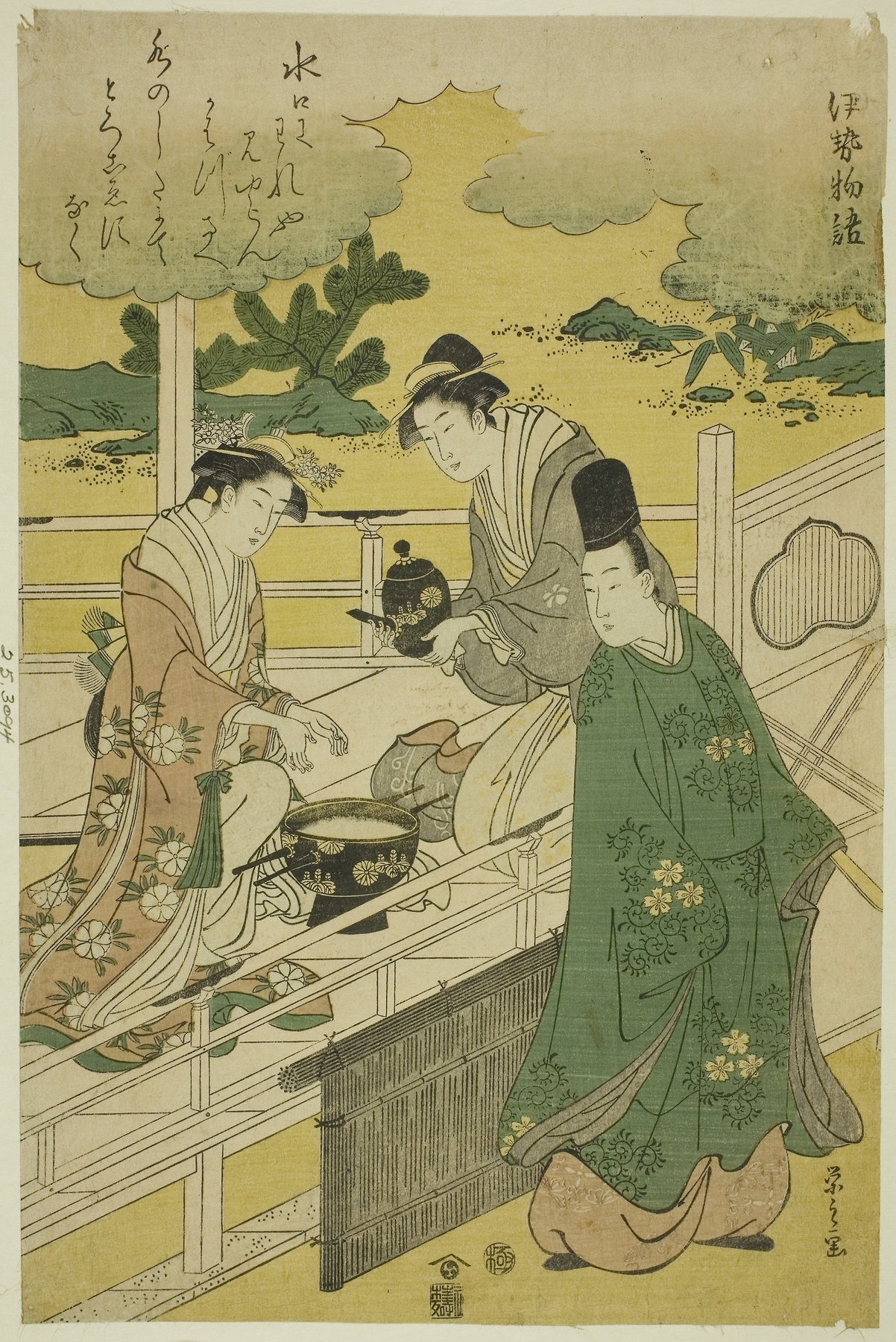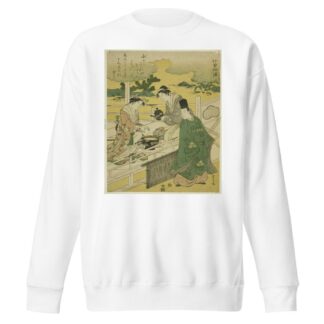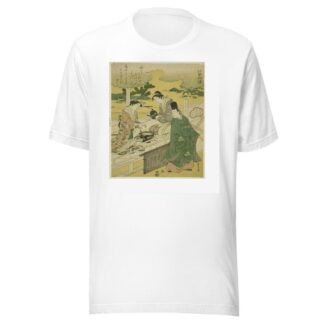Description
A Parody of the Tales of Ise by Chōbunsai Eishi printed on a T-Shirt
Eishi, born of a samurai family, studied under Kano Eisen’in Sukenobu (1730–1790), the fifth-generation head of Kobikichō, one of four Kano academies in Edo. He was granted the artist’s name of Eishi by Shogun Tokugawa Ieharu.
Yuranosuke, a kabuki hero from Kana-dehon Cho-ushingura, posed as a playboy to show that he had no intention of taking revenge for his lord, who had been forced to commit suicide.
About the T-Shirt
Regular fit
Standard length, the fabric easily gives into movement
Casual wear
A classic, everyday option loved by our customers
Side-seamed
Constructed by sewing two parts together, creating a fitted look
The Unisex Staple T-Shirt feels soft and light with just the right amount of stretch. It’s comfortable and flattering for all. We can’t compliment this shirt enough–it’s one of our crowd favorites, and it’s sure to be your next favorite too!
- Solid colors are 100% Airlume combed and ring-spun cotton
- Ash color is 99% combed and ring-spun cotton, 1% polyester
- Heather colors are 52% combed and ring-spun cotton, 48% polyester
- Athletic and Black Heather are 90% combed and ring-spun cotton, 10% polyester
- Heather Prism colors are 99% combed and ring-spun cotton, 1% polyester
- Fabric weight: 4.2 oz./yd.² (142 g/m²)
- Pre-shrunk fabric
- 30 singles
- Side-seamed construction
- Tear-away label
- Shoulder-to-shoulder taping
- Blank product sourced from Nicaragua, Mexico, Honduras, or the US
Chōbunsai Eishi (1756-1829)
Chōbunsai Eishi was a Japanese ukiyo-e artist. His last name was Hosoda (細田). His first name was Tokitomi (時富). His common name was Taminosuke (民之丞) and later Yasaburo (弥三郎). Pupil of Kano Eisen’in Michinobu (狩野 栄川院 典信). Born as the first son of direct vassal of the Shogunate, a well-off samurai family that was part of the Fujiwara clan. Eishi was a vassal of the Shogunate with a generous stipend of 500 ‘koku’ (90,000 litres) of rice.
Eishi left his employ with the Shōgun Ieharu to pursue art. His early works were prints, mostly Bijin-ga portraits of tall, thin, graceful beauties in the original style established by himself akin to Kiyonaga and Utamaro. He established his own school and was a rival to Utamaro. He was a prolific painter, and from 1801 gave up print designing to devote himself to painting.





Reviews
There are no reviews yet.